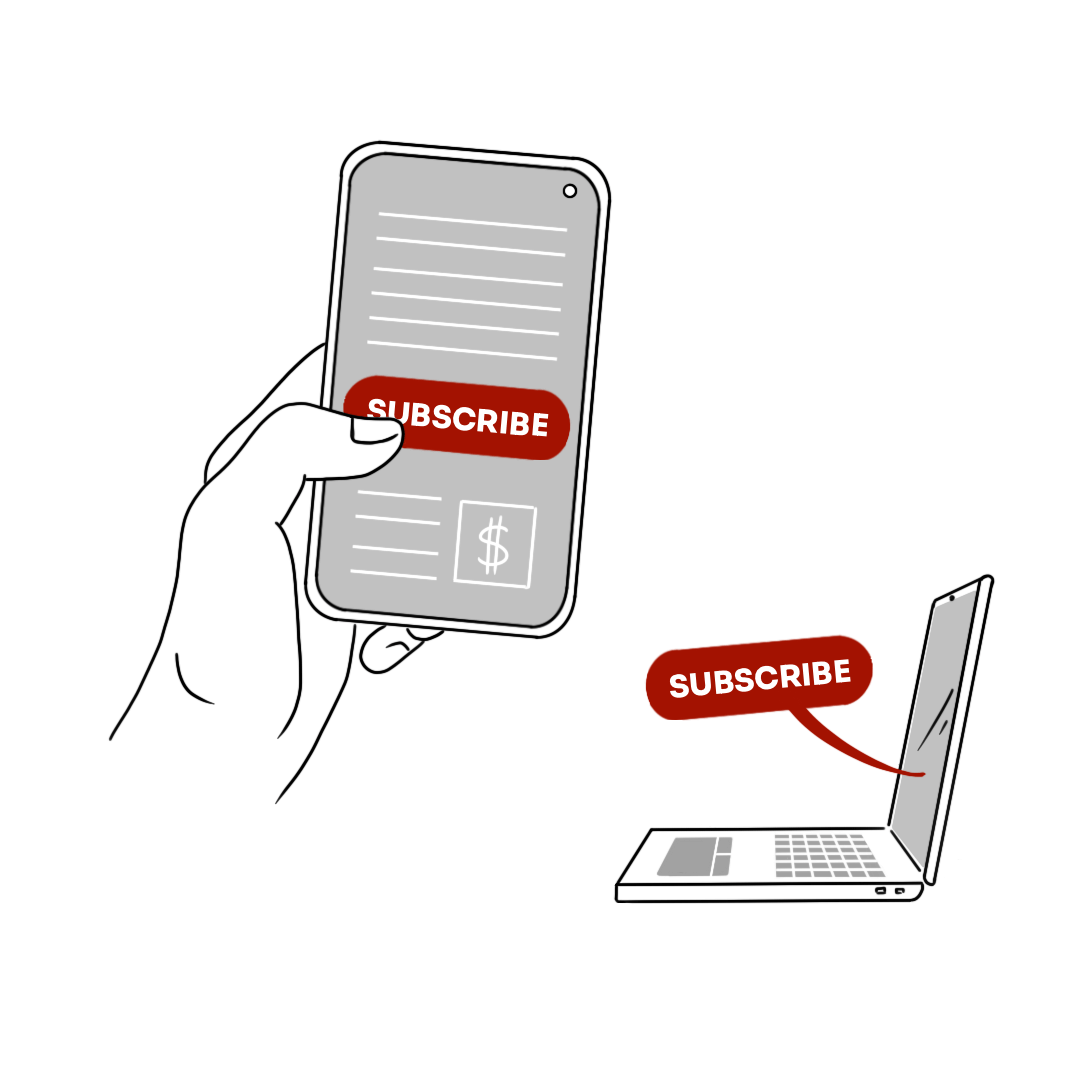Welcome to the world of the mobile applications!
Welcome to the world of the mobile application! 3.5 million – a rough number of mobile applications on Google Play, the most popular app store. And each day, another 3739, on average, arrive on Google’s platforms. It seems that nowadays, every brand has its own mobile application. The companies that produce them will try to convince you with great zeal that you are at the tile end of this race and, without any doubt, you should join the peloton group before it goes out of your sight and your brand falls into oblivion. After all, our lives have already moved to the smartphone, and if you are not in there, you don’t exist, right?
But do you actually agree with this? I will shed some light on the point and prove the opposite.
Try to look for the answers to six important questions that will allow you to understand the maturity of your brand and its readiness to grow, promote and develop a mobile app. This will help you judge whether it’s worth investing in these areas.
How can a mobile application solve consumer problems, and Is there a more effective tool?
The answer to this question should be written down in the first paragraph of the brief for the application developer. The technical capabilities of today’s smartphones – memory, processor, display – mixed with the creativity of developers allow to create virtually unlimited number of new functionalities. But before this comes true and begins working to the benefit of your application, it’s worth considering what are the problems of your customers today, what they may be missing, and what could make their lives easier. And then reflect on whether an application is the best way to solve these pains. In other words – how to use technological and creative capabilities to create new value for the consumer.
If your goal is to copy the functionalities easily accessible from a mobile site (and therefore always available and easily found by the customer using a regular search engine), you’d better give yourself a break. Of course, a club card in the app is a nice-to-have for the client, yet there are dozens of other easier ways for the user to have such a card with him at all times, at no cost, without having to download the app, log in and go through several registration steps.
Example: InPost application that does not copy the current solution, but adds new value that solves a specific customer problem. It gives you the opportunity to pick up and send a package, open a box without touching the terminal display. This feature also made it easier for the delivery men, who do not block the terminal while the delivery is taking place (and this was probably one of the first reasons for building this solution).
Will you design a mobile application that encourages regular use?
If you will not, people will cease to use your app very quickly and delete it after the first usage (or, after a few weeks, their smartphone’s operating system will tell them to do so).
And that could actually be it. However, too many times have I participated in meetings where we’ve been discussing the legitimacy of creating a mobile app, to stop discouraging you from actually bringing it to life at this point already. The key thing here is, whether you actually know or you only suspect that you will create such reasons (maybe you think you know, but there is a significant risk that consumers will think otherwise?). In many companies there is a „positive bias” and, usually, it is cultivated by marketing departments. Basically, we are so fond of our brand that we find it hard to imagine that customers might not share this feeling. And, as employees, we buy the company’s products, browse its website, etc. Therefore, what seems obvious and necessary to us, may be unnecessary or even unnoticeable to many of our customers. Remember, you’re competing with nearly 3.5 million apps, so you need to be certain that your app has the features your consumers can’t do without.
An anti-example? The first IKEA store app, which was a great app that showed the entire catalogue of products and their location in the store. But the value of the app could only be known by being in the store. IKEA employees loved it because it helped them figure out where products could be found and in what quantity they were available. However, for customers who visited IKEA on average about three times a year, it did not add any value. It might have not existed for them. And when they were nudged to use it, they quickly learned that these ‘shopping shortcuts’ meant even more time spent in the tangled paths of the IKEA store.
Will the mobile application reach the most important customer segment?
For the last decade, there was not a single conference where it would not have been discussed, one by one: Millennials, Generation Y, and then Generation Z, and every consecutive digital-native generation. If you don’t offer them an app, they will certainly avoid you, boomer! For sure, there’s plenty of truth in that statement. I remember a parent explaining to me that it is impossible to feed a two-year-old without Peppa Pig movie on the phone.
It is also true that customers have different sensitivities to the tools offered by your brand. Still, even if a Generation Z representative won’t accept a ‘non-digital brand’, it is not a sufficient argument to start writing technical documentation.
Firstly, ask yourself: how many of these Zetas are currently your customers? How many are likely to become them in the next 1-3 years? And, how do they relate to the most valuable segments of your current customers?
Case in point: the McDonald’s app. It provides value to younger segments, while those ‘born earlier’ can still use the traditional ordering methods. Thanks to that, McDonald’s has responded to the needs of some customers, even those that are new to the brand, while leaving the door wide open for others. As a result, we often see this image: parents ordering at the counter, and children using their apps.
Can you create, manage, and maintain a mobile application?
Your app has been launched. You eat a cake at the canteen, shake hands with the CEO, send out a press release, settle the costs, and close the project. What is next?
What has been your goal for the past two or three quarters turns out to be just the beginning of a new and certainly much more important project: you need to maintain and develop the application. Creating an application is one thing, but keeping it running for a long time so that it works anytime and anywhere (on any phone or mobile device) is high-grade stuff. And it actually becomes much more complicated.
The application is very often developed by an external partner or several partners. The classic game of: “It works on my side” begins. And it may not involve critical errors. Because what if the app starts collecting poor ratings? It is worth developing a plan for such circumstances, even before they occur (as plan B, of course, because according to plan A this should never happen). Being dependent on a partner, group of people, ideas, or mere ‘ownership’ (who owns a given structure or process) is a perfect recipe for… failure.
If you are not ready to run a marathon or keep repeating that, it will be worked out somehow, my advice is to give yourself a break.
An anti-example: the Vine app. You may not even remember it – it was a popular application for creating short videos. It was. Why it didn’t succeed? To some extent, this is because Instagram has emerged with video features. But also because the app’s authors could not respond to their users’ switch of needs and adapt their business model to the new reality. Competitors will always be present in the market, and you cannot blame them for your failures.
Is it possible to integrate your data architecture with a mobile application?
Imagine a room where a three-year-old eats spaghetti – it is how many companies IT systems and data flows resemble. It’s a whole universe of systems from different vendors, added at different times and based on varied software, all tied together with shoelaces and a piano string. Bread and butter of many large corporations. Checkout system based on DOS (does anyone recall what it actually was?), cloud database… and an app that needs to be connected to all this stuff.
It’s a very difficult moment, and I feel pity for those who will face the board explaining that you have to invest in a new data architecture (preferably build everything in-house, with the help of external partners, which will cost a lot and take a minimum of three years plus a planned two-year delay on top of that). And that, as part of this work, a new application will be built. Unfortunately, very often, it turns out to be the sole reasonable solution. Words of appreciation for those who decide to follow this path.
Do you have the right resources to promote the mobile application?
There is no such thing as a free app! I just wanted to let you know that apps are another channel (touchpoint) you need to take care of. Another child to raise, listen to and feed. It will consume media budgets, and the POS promoting it will consume valuable space on the store shelf. And be reminded that your app will compete with 3.5 million others available on Google Play. A new item on the marketing budget cost side will emerge, and you should be prepared for it.
Still... 3.5 million of developer teams can’t be wrong!
If you’ve made it to this point, I assume you answered most of the questions. YES. Get to work! You have no time to lose because tomorrow, another 4000 new applications will be on the market.
To be honest, we love mobile apps and just wanted to scare you a little to give you the right motivation to create only the good ones!







